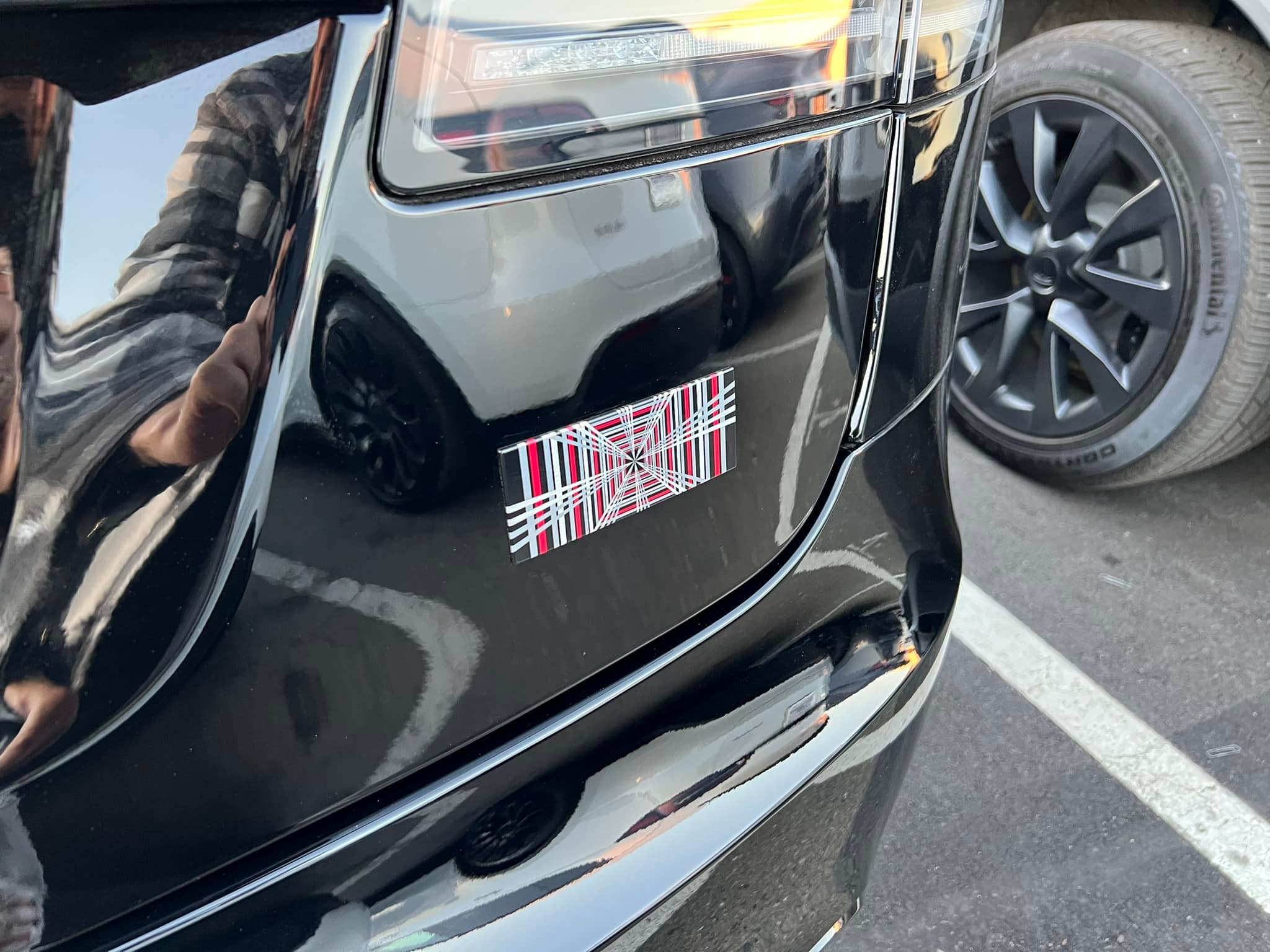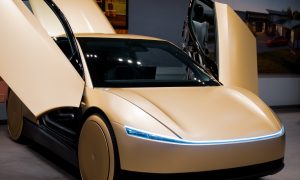

News
Tesla Insurance looks to expand to Oregon and Virginia as its next markets
Elon Musk once noted that Tesla Insurance could someday represent about 30% to 40% of Tesla’s automotive business. Before this could happen, the in-house service must be expanded worldwide. Fortunately, it appears that Tesla has been busy in its efforts to grow its insurance service to more states, with recent insurance filings revealing that the company is looking to start selling vehicle insurance in Oregon and Virginia.
So far, Tesla Insurance has been expanded to California, Arizona, Ohio, Illinois, and Texas. Tesla Insurance’s upcoming expansion into Oregon and Virginia would be a bit different than usual, however, as the service’s policies will be underwritten by Tesla General Insurance. Previously, Tesla has partnered with existing insurance providers to offer coverage for its all-electric vehicles.
Considering Tesla’s efforts to create an in-house ecosystem for its products, it would not be surprising if additional areas that will be served by Tesla Insurance would also be underwritten by Tesla General Insurance.
An in-house insurance service provides a number of advantages for Tesla owners. In previous earnings calls, CEO Elon Musk and CFO Zachary Kirkhorn noted that the company’s in-house insurance is directly tied to a Tesla electric car. This allows the company to specifically assess a driver’s risk based on real-world driving data.
Tesla has improved the use of its vehicle data for its in-house insurance service, with the company initially using anonymized, aggregated data from its vehicles to set rates. The company has since moved on to utilizing data based on a driver’s actual driving behavior. As per comments from Kirkhorn during the company’s Q3 2021 earnings call, Tesla utilized a number of factors such as Safety Scores to help determine a vehicle’s insurance premium. Tesla’s Safety Score system was launched to help screen drivers for the FSD Beta program.
While the expansion of Tesla’s in-house insurance coverage has followed a pretty deliberate pace, the Tesla CFO did note during the Q4 and FY 2021 earnings call that the company is looking to provide the service in enough locations to cover 80% of its customers in the United States by the end of the year. This is an ambitious target, but efforts to achieve this goal definitely seems to be underway.
“Specifically on the question about when we will be in all states, this is a slow process because of insurance being regulated at the state level. And so we have to go through each of those processes with each of the departments of insurance in each state. But our internal goal here by the end of the year is to be in enough locations that 80% of our customers within the U.S. could choose to sign up for Tesla Insurance if they wanted to,” Kirkhorn said when asked about when Tesla Insurance will have full coverage in the United States.
Don’t hesitate to contact us with news tips. Just send a message to simon@teslarati.com to give us a heads up.
News
Starlink Cellular’s T-Mobile service to grow with third-party app data
From Oct 2025, T-Satellite will enable third-party apps in dead zones! WhatsApp, X, AccuWeather + more coming soon.

Starlink Cellular’s T-Mobile service will expand with third-party app data support starting in October, enhancing connectivity in cellular dead zones.
T-Mobile’s T-Satellite, supported by Starlink, launches officially on July 23. Following its launch, T-Mobile’s Starlink Cellular service will enable data access for third-party apps like WhatsApp, X, Google, Apple, AccuWeather, and AllTrails on October 1, 2025.
T-Mobile’s Starlink Cellular is currently in free beta. T-Satellite will add MMS support for Android phones on July 23, with iPhone support to follow. MMS support allows users to send images and audio clips alongside texts. By October, T-Mobile will extend emergency texting to all mobile users with compatible phones, beyond just T-Mobile customers, building on its existing 911 texting capability. The carrier also provides developer tools to help app makers integrate their software with T-Satellite’s data service, with plans to grow the supported app list.
T-Mobile announced these updates during an event celebrating an Ookla award naming it the best U.S. phone network, a remarkable turnaround from its last-place ranking a decade ago.
“We not only dream about going from worst to best, we actually do it. We’re a good two years ahead of Verizon and AT&T, and I believe that lead is going to grow,” said T-Mobile’s Chief Operating Officer Srini Gopalan.
T-Mobile unveiled two promotions for its Starlink Cellular services to attract new subscribers. A free DoorDash DashPass membership, valued at $10/month, will be included with popular plans like Experience Beyond and Experience More, offering reduced delivery and service fees. Meanwhile, the Easy Upgrade promotion targets Verizon customers by paying off their phone balances and providing flagship devices like the iPhone 16, Galaxy S25, or Pixel 9.
T-Mobile’s collaboration with SpaceX’s Starlink Cellular leverages orbiting satellites to deliver connectivity where traditional networks fail, particularly in remote areas. Supporting third-party apps underscores T-Mobile’s commitment to enhancing user experiences through innovative partnerships. As T-Satellite’s capabilities grow, including broader app integration and emergency access, T-Mobile is poised to strengthen its lead in the U.S. wireless market.
By combining Starlink’s satellite technology with strategic promotions, T-Mobile is redefining mobile connectivity. The upcoming third-party app data support and official T-Satellite launch mark a significant step toward seamless communication, positioning T-Mobile as a trailblazer in next-generation wireless services.
News
Starlink expansion into Vietnam targets the healthcare sector
Starlink aims to deliver reliable internet to Vietnam’s remote clinics, enabling telehealth and data sharing.

SpaceX’s Starlink expansion into Vietnam targets its healthcare sector. Through Starlink, SpaceX seeks to drive digital transformation in Vietnam.
On June 18, a SpaceX delegation met with Vietnam’s Ministry of Health (MoH) in Hanoi. SpaceX’s delegation was led by Andrew Matlock, Director of Enterprise Sales, and the discussions focused on enhancing connectivity for hospitals and clinics in Vietnam’s remote areas.
Deputy Minister of Health (MoH) Tran Van Thuan emphasized collaboration between SpaceX and Vietnam. Tran stated: “SpaceX should cooperate with the MoH to ensure all hospitals and clinics in remote areas are connected to the StarLink satellite system and share information, plans, and the issues discussed by members of the MoH. The ministry is also ready to provide information and send staff to work with the corporation.”
The MoH assigned its Department of Science, Technology, and Training to work with SpaceX. Starlink Vietnam will also receive support from Vietnam’s Department of International Cooperation. Starlink Vietnam’s agenda includes improving internet connectivity for remote healthcare facilities, developing digital infrastructure for health examinations and remote consultations, and enhancing operational systems.
Vietnam’s health sector is prioritizing IT and digital transformation, focusing on electronic health records, data centers, and remote medical services. However, challenges persist in deploying IT solutions in remote regions, prompting Vietnam to seek partnerships like SpaceX’s.
SpaceX’s Starlink has a proven track record in healthcare. In Rwanda, its services supported 40 health centers, earning praise for improving operations. Similarly, Starlink enabled remote consultations at the UAE’s Emirati field hospital in Gaza, streamlining communication for complex medical cases. These successes highlight Starlink’s potential to transform Vietnam’s healthcare landscape.
On May 20, SpaceX met with Vietnam’s Ministry of Industry and Trade, announcing a $1.5 billion investment to provide broadband internet, particularly in remote, border, and island areas. The first phase includes building 10-15 ground stations across the country. This infrastructure will support Starlink’s healthcare initiatives by ensuring reliable connectivity.
Starlink’s expansion in Vietnam aligns with the country’s push for digital transformation, as outlined by the MoH. By leveraging its satellite internet expertise, SpaceX aims to bridge connectivity gaps, enabling advanced healthcare services in underserved regions. This collaboration could redefine Vietnam’s healthcare infrastructure, positioning Starlink as a key player in the nation’s digital future.
Elon Musk
Elon Musk commends Tesla team on successful Robotaxi launch
Tesla CEO Elon Musk commended the company on the successful launch of Robotaxi.

Tesla CEO Elon Musk commented on the company’s launch of the Robotaxi platform, which officially went live to a small group on Sunday in Austin, Texas.
It is the first time Tesla has offered driverless rides through the ride-hailing platform it has worked to activate for several years, and it was overwhelmingly successful based on early reviews.
The launch was coupled with the release of the first-ever looks at the Tesla Robotaxi app, which does more than allow riders to summon vehicles for transportation. It also allows the rider to adjust climate settings in the car before it arrives for a comfortable ride, and it will sync entertainment and streaming settings to keep occupants entertained.
Tesla Robotaxi riders tout ‘smooth’ experience in first reviews of driverless service launch
The first rides are being performed with a safety monitor in the passenger’s seat. These monitors have no control over the vehicle, and are there just to ensure smooth operation.
The first reviews called rides “smooth” and “comfortable,” and commended Tesla for its hard work over the past few years to make this happen. Many were impressed with the cars’ ability to keep pedestrians safe, avoid congested parking lots, and the efficiency of the rides, as the time from the ride request to the Robotaxi accepting the ride was extremely fast.
Musk has been at the forefront of this operation for a decade, as Tesla has been working to release a version of the Robotaxi through the development of Full Self-Driving. This has been an effort that included seeking top-tier engineering talent and taking incredible leaps of faith, including switching to a Vision-only approach for Full Self-Driving.
Musk commended the Tesla team for its hard work:
Super congratulations to the @Tesla_AI software & chip design teams on a successful @Robotaxi launch!!
Culmination of a decade of hard work.
Both the AI chip and software teams were built from scratch within Tesla.
— Elon Musk (@elonmusk) June 22, 2025
It’s truly an incredible accomplishment, as many considered Robotaxi a “failure” despite it not even being rolled out. In May, we reported on media outlets calling the Robotaxi rollout a total failure, despite Tesla always maintaining the launch would happen in June:
Tesla Robotaxi deemed a total failure by media — even though it hasn’t been released
Hundreds of rides have already been taken, and there have not been many complaints. It’s an incredible jump forward for Tesla.
-

 News2 weeks ago
News2 weeks agoI took a Tesla Cybertruck weekend Demo Drive – Here’s what I learned
-

 Elon Musk2 weeks ago
Elon Musk2 weeks agoTesla tops Cathie Wood’s stock picks, predicts $2,600 surge
-

 News2 weeks ago
News2 weeks agoFirst Tesla driverless robotaxi spotted in the wild in Austin, TX
-

 Elon Musk2 weeks ago
Elon Musk2 weeks agoX account with 184 followers inadvertently saves US space program amid Musk-Trump row
-

 Elon Musk2 weeks ago
Elon Musk2 weeks agoTesla sues former Optimus engineer for stealing trade secrets
-

 Elon Musk2 weeks ago
Elon Musk2 weeks agoTesla CEO Elon Musk reveals new details about Robotaxi rollout
-

 News2 weeks ago
News2 weeks agoSpaceX produces its 10 millionth Starlink kit
-

 News2 weeks ago
News2 weeks agoTesla Robotaxi just got a big benefit from the U.S. government




















